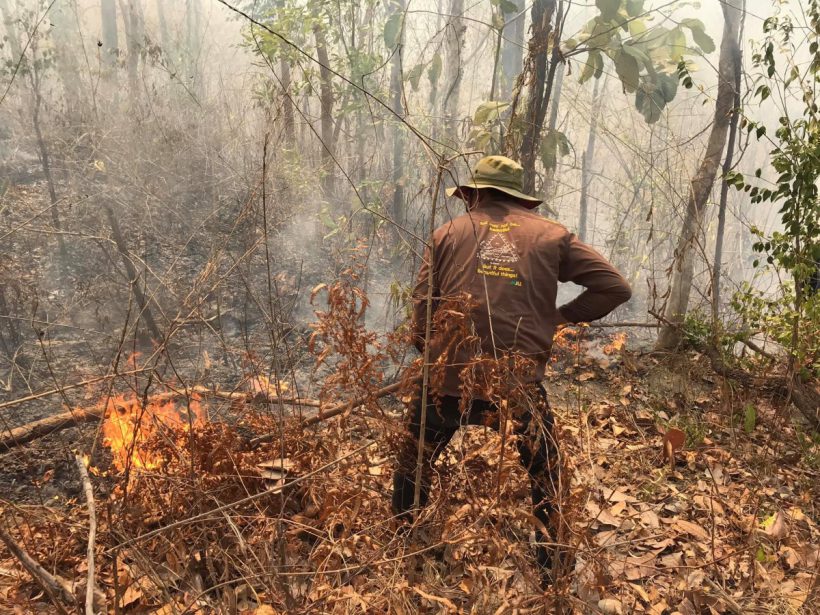The situation of forest fires in the North, especially in Chiang Mai was a crisis continuously for several days and causing widespread damage. It affected the entire forest area, animals and soil, and natural resources were destroyed. Besides, it also caused toxic dust and smoke. As a result, it caused severe air pollution that harmed health.
“Fire Cat Team,” Maejo’s volunteer spirit, led by Ajarn Jakkaphong Chaiwong, a lecturer of soil science of the Faculty of Agricultural Production at Maejo University was working jointly with the Disaster Volunteers in the North to support various missions of various organizations to mitigate disasters. The work had been planned for more than 2 months and the team joined various operations in mid-March 2020. Mr. Chakrapong Chaiwong said, “My student team and I volunteer to work in many missions. First of all, we are volunteers for relieving disasters in the North (Center for Dust Smoke, Chiang Mai Province). In our team, we have motorcycle groups, flying umbrellas, ATVs, drones, etc. that can support various missions of various organizations to relieve disasters such as forest fires and fires. At the present, the forest fires have caused haze in which drones or small unmanned aircraft can fly into the target position and report to the provincial command center to contact and coordinate with relevant organizations such as the Forest Fire Control Unit of the Department of National Park, Wildlife and Plant Conservation, Municipal Fire Brigade Units, villages, etc. in the area to go to work or to extinguish and control the fires. Sometimes, we are requested via Line Group and we have several representatives to coordinate with Chiang Mai Province and I am one of them. I use drones which are also used already for my teaching and conducting research studies.
The second part of our missions is to work jointly with the Army, the Third Army Area Command (Kawila Camp) to explore the dry, the fog, and the fire areas of Chiang Mai by a 4-seat aircraft, or CESSNA 172/T 41 or MESCALERO which is a 4-seat small training aircraft with a flight range of 700 km, height 16,500 feet and can fly up for 4 hours. It can go to the problem area quickly (see link https://www.chiangmainews.co.th/page/archives/1286980 of the Army). The flight is under the supervision of Major General Jiradet Klomphet, Deputy General of the Third Army Area Command for aerial photography taken by a multispectral camera (RGN Red + Green + Near Infrared). With this camera, we can analyze images for the normalized difference vegetation index (NDVI) to assess the fertility of plants. In this case, it is used to assess the forest, the agricultural areas along the Ping River which are associated with the drought. The data will be used as a database for water management for agriculture in the areas. We also have such a camera for conducting research studies, teaching, and learning. Apart from this, we also work with the Research and Development Center of the Department of National Park, Wildlife and Plant Conservation in Chiang Mai Province.
















